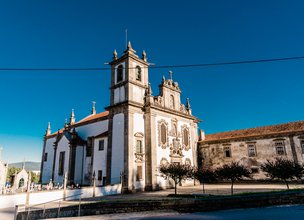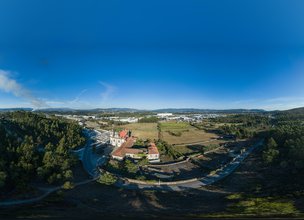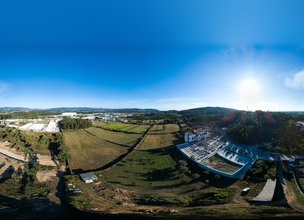The primitive foundation of the Mosteiro Beneditino of são Romão, in the lands of Neiva, dates from the X-XI centuries, and the cenobium was enlarged and consecrated in 1087 by the bishops of Braga and Tuy. However, in the early years of the 12th century, due to Arab incursions in the north of the Peninsula, this monarchic house was in a ruinous state, so Count D. Paio Soares had its structure rebuilt after 1110.
During the reign of D. Afonso Henriques, he received a charter, granting him the land that currently forms the parishes of São Romão de Neiva, Alvarães and Anha. With the reforms carried out within the Benedictine order, the convent fell into decay at the end of the 12th century, and it was only in the 15th century that there was news of a revival of the community, through a new reform directed by Abbot Gomes and Frei João Álvares, although the cenobium has never been extinguished during the three intermediate centuries.
In the second half of the 17th century, the Benedictine community completely demolished the Romanesque building, erecting a new temple and the respective conventual space with Mannerist features. The church with a longitudinal plan is composed of a single nave with two deep side chapels, which give the illusion of the existence of a transept, and a narrower and lower chancel, with a sacristy and access to the conventual premises. The facade of the temple has a profuse decorative scheme of Mannerist lines, full of volutes, windings and pinnacles of evident inspiration in Flemish treatises. Inside, the Mannerist carved altarpieces stand out, those that integrate the side chapels and the main altarpiece. Of what remains of the convent, the Tuscan cloister stands out, divided into two floors, the first with an arcade, the second with bay windows.
The primitive foundation of the Mosteiro Beneditino of são Romão, in the lands of Neiva, dates from the X-XI centuries, and the cenobium was enlarged and consecrated in 1087 by the bishops of Braga and Tuy. However, in the early years of the 12th century, due to Arab incursions in the north of the Peninsula, this monarchic house was in a ruinous state, so Count D. Paio Soares had its structure rebuilt after 1110.
During the reign of D. Afonso Henriques, he received a charter, granting him the land that currently forms the parishes of São Romão de Neiva, Alvarães and Anha. With the reforms carried out within the Benedictine order, the convent fell into decay at the end of the 12th century, and it was only in the 15th century that there was news of a revival of the community, through a new reform directed by Abbot Gomes and Frei João Álvares, although the cenobium has never been extinguished during the three intermediate centuries.
In the second half of the 17th century, the Benedictine community completely demolished the Romanesque building, erecting a new temple and the respective conventual space with Mannerist features. The church with a longitudinal plan is composed of a single nave with two deep side chapels, which give the illusion of the existence of a transept, and a narrower and lower chancel, with a sacristy and access to the conventual premises. The facade of the temple has a profuse decorative scheme of Mannerist lines, full of volutes, windings and pinnacles of evident inspiration in Flemish treatises. Inside, the Mannerist carved altarpieces stand out, those that integrate the side chapels and the main altarpiece. Of what remains of the convent, the Tuscan cloister stands out, divided into two floors, the first with an arcade, the second with bay windows.
Location
São Romão do Neiva
Coordinates
Lat: 41.639375
Long: -8.7766917
Hello little one!
I'm Piquinhos and I can help you learn more about the Geopark!
Technical details
Child Mode
Discover the geopark in a simpler format, aimed at the little ones.
Clique ENTER para pesquisar ou ESC para sair



